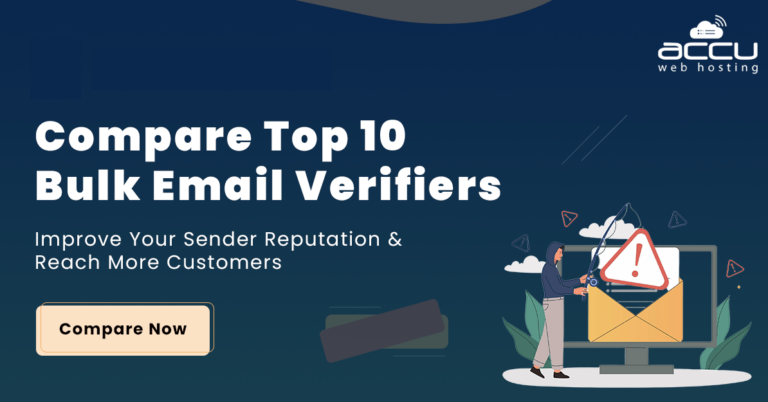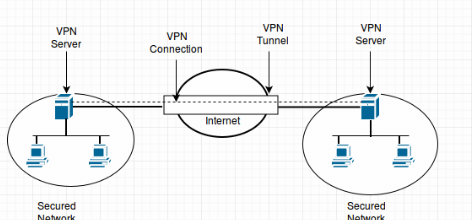WordPress as a Low-Code Platform – A Complete Guide
Imagine someone launching a new business with an idea buzzing in their mind: a boutique for handcrafted jewelry, a personal blog, or a niche e-commerce store. They want a website that looks modern, loads fast, and has smart features, but they’re not a developers. Instead of navigating cryptic code, they sit down, choose a template, drag in some images, adjust settings visually, and, within hours, the site is live and looks stunning.
That’s the magic of WordPress in 2025. It’s not just a CMS; it’s a full-blown low-code powerhouse that helps anyone, from solo creators to enterprise teams, build and launch sophisticated websites fast. With intuitive block editors, AI-powered website builders, and plugins that add advanced functionality with just a few clicks, WordPress delivers power without the coding headache.
This guide explores how WordPress became the go-to low-code platform, the tools that drive its momentum, real-world examples, and how you can leverage it too.
What is a Low-Code Platform?
A low-code platform is a development environment that enables users to create applications and websites using visual interfaces, drag-and-drop tools, pre-built templates, and plugins instead of relying solely on manual coding.
Key Characteristics of Low-Code Platforms:
- Visual Development: Built with drag-and-drop editors.
- Pre-Built Components: Use ready-made modules (forms, dashboards, workflows).
- Integration Ready: Connect third-party tools with minimal effort.
- Rapid Prototyping: Build and test ideas quickly.
- Accessibility: Lower barrier for non-technical users.
Low-code is not “no-code.” It still allows for custom coding when deeper customization is required, making it flexible for both beginners and developers.
Core Features that Make WordPress a Low-Code Platform
WordPress effectively bridges the gap between no-code and low-code options. WordPress allows you to create a website, install a theme, and publish content without having to write any code. However, as you begin to add features such as custom fields, automation, or dynamic content, it shifts into a low-code environment. This is where WordPress truly excels.
-
Gutenberg Block Editor & Full-Site Editing (FSE)
Gutenberg allows composing pages with reusable blocks. FSE extends this to site-wide elements, letting users edit templates, styles, and patterns via a drag-and-drop interface.
Theme.json handles global settings like colors and typography with JSON, requiring zero PHP for basic themes. This low-code approach means designing a full site, like a blog with custom navigation, happens in the dashboard, previewable in real-time.
-
Visual Page Builders
Plugins like Elementor, Beaver Builder, Divi, and WPBakery provide WYSIWYG (What You See Is What You Get) editors. Users drag elements (sections, widgets, modules) onto canvases, customize with clicks, and add animations or responsive tweaks. For example, Elementor includes pop-up builders and form integrations, ideal for landing pages or portfolios without CSS.
-
Custom Fields and Data Management
With plugins like ACF, Pods, and Toolset, you can create custom content in WordPress without coding. For example, instead of just using posts and pages, you can make a new content type like “Team Member” and add fields for a photo, bio, and role.
These plugins also let you show this data on your site using shortcodes or blocks, so you can build things like team pages, product catalogs, or event listings. Plus, they support filters and search options, making it easy for visitors to find the information they need.
-
Form and Application Builders
WordPress makes form creation a low-code task through plugins like WPForms, Gravity Forms, and Formidable Forms. These tools use drag-and-drop interfaces that allow users to create simple contact forms, complex surveys, registration forms, or even payment forms in minutes.
-
Plugins for Code Snippets and Integrations
The WordPress ecosystem has over 60,000 free plugins and countless premium ones, which serve as pre-built modules for adding functionality to a site. Whether you need SEO optimization, social media sharing, contact forms, analytics, or advanced eCommerce capabilities, there’s a plugin for it.
Also, WPCode safely inserts PHP/JS snippets. For integrations, Zapier or Uncanny Automator connect to external services (e.g., Stripe for payments) via no-code workflows.
What Types of websites can you make with WordPress Low-code?
With the help of plugins and themes, you can create different kinds of websites like online stores, learning platforms, membership sites, booking systems, and even community forums.
1. Websites and Landing Pages
- Portfolio Sites: Create professional portfolios for freelancers, artists, or agencies using drag-and-drop builders like Elementor or Divi. Add galleries, contact forms, and testimonials with pre-designed blocks or widgets, no coding required.
- Business Websites: Build sites for small businesses, such as restaurants or consultancies, with responsive themes and plugins like Yoast SEO for optimization. Customize layouts, menus, and branding via the Gutenberg Block Editor or Full-Site Editing (FSE).
- Landing Pages: Design high-converting landing pages for marketing campaigns using tools like Elementor’s pop-up builder or SeedProd. Add forms, countdown timers, and integrations with email services like Mailchimp via visual interfaces.
- Blogs and Magazines: Create content-heavy sites with dynamic post types, categories, and archives. Gutenberg’s reusable blocks simplify content creation, while plugins like WPForms handle subscription forms.
2. E-Commerce Stores
- Online Shops: Use WooCommerce to build fully functional e-commerce stores with product pages, carts, and checkout systems. Low-code tools allow visual customization of storefronts, and extensions handle payments (Stripe, PayPal), shipping, and inventory.
- Digital Downloads: Sell e-books, courses, or music with plugins like Easy Digital Downloads, configured via dashboards for pricing, licenses, and user access.
- Booking Systems: Develop booking platforms for services (e.g., salons, rentals) using plugins like Bookly, which provide calendars and payment gateways without coding.
3. Web Applications
- Job Boards: Build job listing platforms like CXL Jobs using Gravity Forms for submissions and GravityView for filterable displays. Applicants submit details via forms, and listings appear in searchable tables.
- Membership Portals: Develop subscription-based membership sites with MemberPress or Restrict Content Pro. Set up user roles, paywalls, and drip content using visual settings.
- Learning Management Systems (LMS): Build online courses with LearnDash or LifterLMS. Add lessons, quizzes, and certificates through drag-and-drop interfaces, with progress tracking for users.
4. Headless and API-Driven Applications
- Progressive Web Apps (PWAs): Use WordPress as a headless CMS, leveraging its REST API to serve content to frontend frameworks like React or Vue.
- Mobile App Backends: Feed content to mobile apps via the WordPress API, using plugins like WP REST API Controller to expose custom endpoints without coding.
5. Community & Social Platforms
- Forums: Using BuddyPress, bbPress, or PeepSo, you can create online communities, discussion forums, or even social networks. Features like profiles, messaging, groups, and activity feeds are handled with low-code configurations.
- Learning Communities: Platforms combining education and interaction, like course-based discussion groups.
Benefits of Using WordPress as a Low-Code Platform
Using WordPress for low-code development offers many benefits, making it a favored option for various users.
-
Speed and Efficiency
Low-code tools slash development time. A site that might take weeks to code can be built in days using builders like Elementor. Real-time editing and templates accelerate iterations, ideal for agile projects.
-
Cost-Effectiveness
As open-source software, WordPress is free, with many plugins and themes available at no cost (though premium options exist). This lowers barriers compared to proprietary platforms like OutSystems, saving on licensing and development fees.
-
SEO and Responsiveness
Built-in SEO tools, plus plugins like Yoast, ensure visibility. Themes are mobile-responsive by default, enhancing user experience across devices.
-
Vast Ecosystem and Community
With over 70,000 plugins, you have endless extensions. The global community provides support, updates, and innovations, ensuring security and relevance.
-
Security and Maintenance
Regular core updates patch vulnerabilities. Managed WordPress hosting adds firewalls and backups, making it reliable for business use.
Limitations of WordPress as a Low-Code Platform
While WordPress is powerful, it may not be suitable for all low-code projects. As websites grow more complex, certain challenges emerge.
-
Extra Work for Complex Integrations
Connecting tools like Stripe or HubSpot often requires custom coding. Even with tools like Zapier, advanced workflows may need extra scripts.
-
Not Ideal for Complex Data Structures
WordPress handles simple content well, but it struggles with projects needing advanced database relationships or many-to-many connections. This can slow things down as the project grows.
-
Scalability Issues
Large sites with many plugins and custom features can face slow performance, heavy databases, and admin lag.
-
Limited for App-Like Experiences
WordPress builders work well for standard websites, but if you need highly interactive features like real-time search, dynamic dashboards, or app-like designs, WordPress is harder to adapt.
-
Security Concerns with Too Many Plugins
Low-code WordPress projects often rely on multiple plugins. The more you add, the higher the risk of vulnerabilities if they’re outdated or poorly maintained.
Conclusion
WordPress works well as a low-code solution for building websites, online stores, and business applications with minimal coding. Its strength lies in its flexibility, affordability, and wide plugin ecosystem, which make it suitable for both beginners and experienced users.
However, for projects that demand complex workflows, heavy scalability, or highly interactive app-like experiences, WordPress may require additional development effort. With the right hosting, careful plugin selection, and regular maintenance, WordPress can be a reliable low-code platform for long-term growth.
Frequently Asked Questions
1. How secure is WordPress as a low-code platform?
Security depends on regular updates, trusted plugins, and strong hosting. With proper maintenance, WordPress can be very secure.
2. Why should businesses use WordPress low-code instead of custom development?
It saves time, lowers costs, and offers thousands of ready-made solutions, making it faster to launch and easier to manage.
3. Can I create mobile-friendly apps or sites with WordPress low-code?
Yes. Most modern themes and plugins are responsive, and you can integrate progressive web apps (PWAs) for a mobile-like experience.
4. What types of businesses benefit most from WordPress low-code?
Small to medium businesses, startups, nonprofits, educators, and service providers benefit the most due to cost savings and speed.
5. Does WordPress’ low-code support multilingual websites?
Yes. Multilingual plugins make it possible to build sites in multiple languages without coding.
About the Author: Jason-Pat
Founder & CTO at AccuWebHosting.com. He shares his web hosting insights at AccuWebHosting blog. He mostly writes on the latest web hosting trends, WordPress, storage technologies, Windows and Linux hosting platforms.




